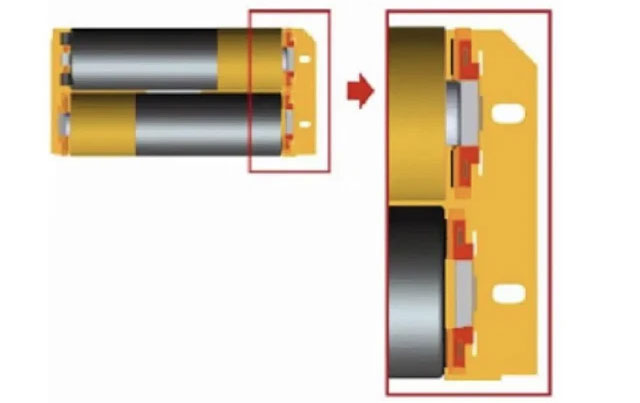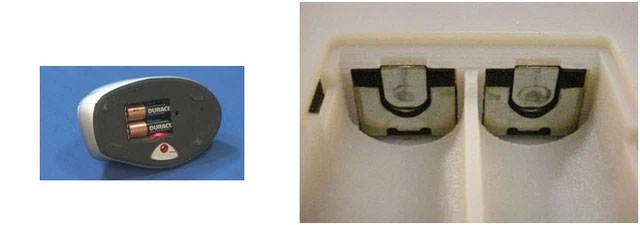Batteries are extremely useful, but they still have a few drawbacks. For example, they can only store a certain amount of electricity; charging takes time (and not all batteries can be recharged); there are too many types of batteries; you have to install them in devices in a predetermined order. Microsoft has addressed the last issue, but consumers don’t seem to benefit from it.
Microsoft’s solution is incredibly simple, to the point that it’s hard to understand why no one thought of it sooner. If only someone had figured out this method early on, perhaps we wouldn’t have to fumble in the dark every time we change the batteries in our flashlights!
So let’s take a look at what Microsoft’s initiative is and why you won’t benefit from it.
Why must batteries be installed in a predetermined order?
Batteries need to be installed in a predetermined order due to the design and operation of electronic circuits. Small devices operate on direct current (DC), where the electricity flows continuously in one direction. There are many reasons why they can only use DC and not alternating current (AC) – and one of those reasons relates to batteries.
Batteries cannot store alternating current; they only work with direct current. Since most small devices rely on batteries, it’s logical for them to use DC. Additionally, converting the battery’s DC to AC is quite costly and pointless. Even if there were an AC battery, other issues would arise, such as components that only work with DC (like LED bulbs), energy loss, and various design problems.
Because they only support DC, batteries must be installed in a predetermined order, meaning their terminals must point in a specific direction: the most common configuration has the positive terminal on one end and the negative terminal on the other. Some batteries, like the 9-volt battery, have both terminals on the same end, but they still need to be connected in a specific order for the current to flow correctly.
InstaLoad solves the problem in an unexpectedly simple way

InstaLoad helps connect battery terminals in the correct order, allowing current to flow in the desired direction.
InstaLoad is Microsoft’s solution for connecting battery terminals correctly, allowing current to flow in the desired direction, regardless of how the battery is installed in the device. This solution modifies the battery compartment so that each end has a positive and negative contact point.
If you closely observe a battery, the flat end typically serves as the negative terminal, while the protruding end is the positive terminal. If you insert the flat end of the battery, it will touch the outer contact point. If you insert the protruding end of the battery, it will touch the inner contact point, which is designed to be slightly recessed compared to the outer contact point. The two contact points in the battery compartment are connected in series to ensure that the current always flows in the predetermined direction.

With InstaLoad, no matter how you insert the battery, it will still connect to the correct port.
Thus, devices using InstaLoad always ensure that there is a positive and negative contact point at both ends of the battery compartment while still using DC. No matter how you insert the battery, it will connect to the correct port, and the current will flow as you want.
Microsoft claims that this technology works with all popular replaceable batteries on the market, including CR123, AA, AAA, C, and D sizes. The InstaLoad system also works with rechargeable batteries.
A technology that no one uses
Surprisingly, Microsoft actually patented the InstaLoad system back in…2010, but now, 12 years later, most people have never heard of it!
While it’s unclear why, perhaps time and money are two of the many barriers preventing the InstaLoad system from becoming widely adopted. Microsoft allows third parties to implement InstaLoad under two conditions: they must print the InstaLoad logo on the product and pay a licensing fee – something many companies do when launching a new advanced technology. The process is as follows: a third party must sign a non-disclosure agreement, conduct further research on InstaLoad, design a prototype with the InstaLoad battery system inside, and pay Microsoft a small fee. Clearly, this is much more expensive and complicated than simply designing a standard battery compartment and letting consumers do what they have always done without complaint!
Microsoft’s breakthrough comes too late

Roku remote control using integrated rechargeable batteries
Modern devices today do not necessarily need to use replaceable batteries. Integrated lithium-ion batteries, which can be recharged, and USB charging ports are becoming increasingly common, even appearing in many portable radios and flashlights that previously used AA or AAA batteries just a few years ago. Even TV remotes are now equipped with integrated rechargeable batteries.
Devices that still use replaceable batteries likely only exist in the budget segment. For example, a radio using AAA batteries costs around $9. Traditional battery compartments use a simple, inexpensive, and easy-to-manufacture system. Replacing them with Microsoft’s InstaLoad system would not only increase production costs for companies that specialize in cheap radios or flashlights, but also complicate the design process to the point where they would prefer to integrate rechargeable batteries into the device instead.
The bleak future of InstaLoad
If Microsoft had removed the cumbersome regulations and fees mentioned above, InstaLoad might have become more popular. This system clearly has advantages over standard battery compartments, but unfortunately, it emerged at a time when other more convenient solutions were gradually becoming widespread.
On one hand, Microsoft might not get more famous with their logo printed on a mountain of cheap devices. On the other hand, they patented InstaLoad over a decade ago, so turning it into open-source technology wouldn’t result in any significant loss.
The final issue: Microsoft doesn’t even use InstaLoad

Perhaps even Microsoft doesn’t use it anymore.
After a decade of silence, it’s hard to pinpoint why InstaLoad hasn’t become popular. One of the clearest reasons might be that even Microsoft doesn’t use it.
This company owns the patent for the system and is free to use it as they wish. They developed it and know well the applicability of this product. With the intention of being a simple solution, InstaLoad shouldn’t have driven up the production costs of the devices that integrated it too high, except for the licensing fee.
Many Microsoft devices, including Xbox controllers and computer mice, also use replaceable batteries. Therefore, the company has plenty of opportunities to apply their groundbreaking technology. But if even the creator of InstaLoad, who owns the rights and has abundant resources, neglects it, why should anyone else use this technology?


















































